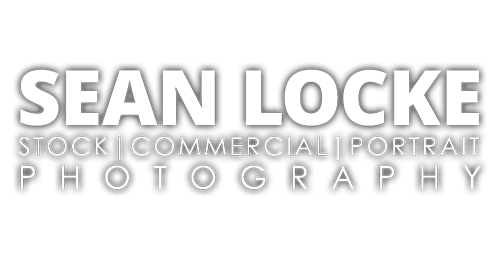My business is licensing creative imagery to designers and other buyers that need content for their work. I don’t “sell pictures” – what stock photographers do is create a license, a set of terms, that grants certain rights to another to use a piece of content. Now, licenses to use my work are not free, despite the misleading catch-all title of “royalty free” for this general style of licensing. The royalties I receive for my work supports my business and family. There is a type of licensing that does come “free”, although with risks attached.
Image Licensing
A quick review of definitions and terms we’ve covered here before. When you visit a stock photo/video/content agency, and pay and download a piece of content, what you are really paying for is a license to use that piece of work. You are not buying the image – that digital file is not yours to do whatever you wish with. The license terms will specify what you are and are not allowed to do with the content. How specific and restrictive the terms are can generally be divided into two categories. However, these are just the names for what is still just a set of licensing terms.
- royalty free (RF) – As mentioned above, a royalty free license is not actually free. There is a monetary cost to the license, generally. However, usage of the content is free from further costs when used within the terms of the license contract. An RF license typically is for perpetual use, worldwide, has a high limit on print copies, and will probably have restrictions on using the content on something intended to make a direct sale for profit, like a poster or t-shirt. The actual uses are not tracked by the content owner or agency, as a designer can license an image and use it on multiple projects.
- rights managed (RM) – An RM license is priced based on the rights the buyer wishes to purchase. Options include things like location, print run size, market, etc. An image licensed for use in a small advertising flyer in Topeka, KS with a run of 5,000 will cost a lot less than a world wide campaign print ad run by Apple. One of the benefits of managing the rights of a piece of content is that the owner can have a complete record of the previous and current uses, and so, is able to offer a buyer image exclusivity, or sales history of the content at a premium, if the campaign needs it. However, those things may not be available if the image history is not tracked completely.
Again, at the base, both RF and RM are just sets of licensing terms. An image being able to be used commercially (advertising) or editorial (news) is separate from the licensing terms, and commercial and editorial images can both be licensed RF or RM.
There are other “styles” of licensing as well. At one point, Getty Images tried to push “rights ready” licensing as a simplified version of RM, but it didn’t particularly fly with buyers. Another set of license terms has been adopted by some creatives who are interested in sharing their work with others at no cost, for whatever the reason. These kind of licenses come under the name “Creative Commons”.
Creative Commons
Creative Commons is a non-profit organization that has developed and oversees a system for licensing creative works at no cost to the user.
If you want to give people the right to share, use, and even build upon a work you’ve created, you should consider publishing it under a Creative Commons license. CC gives you flexibility (for example, you can choose to allow only non-commercial uses) and protects the people who use your work, so they don’t have to worry about copyright infringement, as long as they abide by the conditions you have specified.
There are descriptions of the licensing terms they have developed here: http://creativecommons.org/licenses/ For example, the description of one of the licenses states:
This license lets others remix, tweak, and build upon your work non-commercially, and although their new works must also acknowledge you and be non-commercial, they don’t have to license their derivative works on the same terms.
Their sets of terms deal with several things, in different combinations. Whether the user has to give credit to the owner, whether the work can be used commercially, if the work can be modified from its original form, etc.
There’s no problem with any of this. If someone feels the need to give away the rights to their work, that is their choice, and it’s nice that there is a sort of standard for doing so.
The Problem
Actually, there is a problem. The problem arises when 3rd party applications, like Flickr, allow users to grant licenses to uploaded content, and incorporate these “free to use” licensing terms as part of what sells people on using the site. It isn’t valid creators uploading content and granting licenses, but the fact that Flickr (and others) do not vet out the contributors and place the risk for using their uploaded content onto the user that downloads the works. Witness the following situation posted on Google+:
A friend of mine, +Tasha Turner got a letter today from +Getty Images asking her very impolitely for $780 for an image she used on a web site, which she had picked up from Flickr as being +Creative Commons licensed for commercial use. It turns out that the person who posted it on Flickr didn’t have the rights to the image.
Well, the person who posted it on Flickr was breaking Flickr’s TOS, and violating Getty Image’s TOS and copyright — but that didn’t seem to matter, when Tasha explained it. Getty Images, rather than pursuing the Flickr source, told Tasha to sue the user on Flickr.
Now, the Flickr terms of service state:
You agree to not use the Yahoo! Services to: … f. upload, post, email, transmit or otherwise make available any Content that infringes any patent, trademark, trade secret, copyright or other proprietary rights (“Rights”) of any party
However, Yahoo/Flickr claim no real responsibility when dealing with content people have uploaded fraudulently, or accidentally. In fact, all there is is the typical indemnity clause:
You agree to indemnify and hold Yahoo! and its subsidiaries, affiliates, officers, agents, employees, partners and licensors harmless from any claim or demand, including reasonable attorneys’ fees, made by any third party due to or arising out of Content you submit, post, transmit, modify or otherwise make available through the Yahoo! Services, your use of the Yahoo! Services, your connection to the Yahoo! Services, your violation of the TOS, or your violation of any rights of another.
Getty is not interested in educating you on licenses. They are interested in getting their money for the image usage. The fee is a penalty to help scare someone away from doing similar in the future, and also to compensate the creator a little for the loss in value of the image from the user using it off the record.
So, basically, if you use content from a service like this that doesn’t vet out or monitor its users, you’re going to be at risk. This is a good reason a real business should be using a legitimate stock content agency. Of course, I recommend the agencies I distribute through, like Stocksy , GL Stock Images , etc. A real stock photo agency will require identification, business history, examples, etc. from its contributors to verify they are who they say they are, and that they aren’t going to be uploading the work of others.
What Can You Do?
If you are convinced you need to use a CC license for free from a service like Flickr, the best step would be to make sure you are using work from someone you know. A friend in the real world, or someone who you’ve developed a relationship with online. Someone you know actually has the skills and equipment to do the work you are interested in.
With various browser plugins, you can view the “hidden” meta-data (EXIF) of an image. This should contain information on the copyright holder, title, description, etc. of the image. You can use this information to do more research as to the origin of the image. If the EXIF data is blank, you can be pretty sure someone has wiped it intentionally, and that isn’t good for you.
If easily determining the creator of the content isn’t possible, you are going to have to do some research to find out if the “owner” is really the owner of the copyright for that work. You can use a service like TinEye or Google Image search to try and find the “original” location of the content. These are reverse-image searches, where you upload an image, and the service checks its database to find sites that have a match for that image. A photographer may have a blog where they post their new work, and they also put it on flickr for distribution. Then you can compare the user information on Flickr with the blog owner to see if they match up.
You can also use ImageExchange, which is a browser plugin from PicScout (a Getty subsidiary). Various agencies will upload content to the ImageExchange database. When you use the plugin on a certain image on a web page, the service will try to find it in the database, and then tell you where the image can be licensed from. Obviously, if the image is being licensed for money somewhere, it is unlikely it would also be given away for free through Flickr.
Conclusion
Sure, you can spend time trying to verify your ability to use content you find on various services, and you may still end up at risk. My suggestion, of course, is to use a legitimate stock agency that vets its contributors – their goal is to provide the buyer with trustworthy service to keep the buyer coming back again and again.









Great piece Sean, I’ll use it in my upcoming talk with designers about various stock photo sources.
Great post. I would like all my clients to read this. It is amazing the images they will send me to use on their projects. They always claim they are free to use because they got them from the internet.
[…] Monday morning to you! Let’s talk licensing today. As I’ve discussed before, when you go to a stock photo agency and make a purchase, what you are really doing is buying a set […]